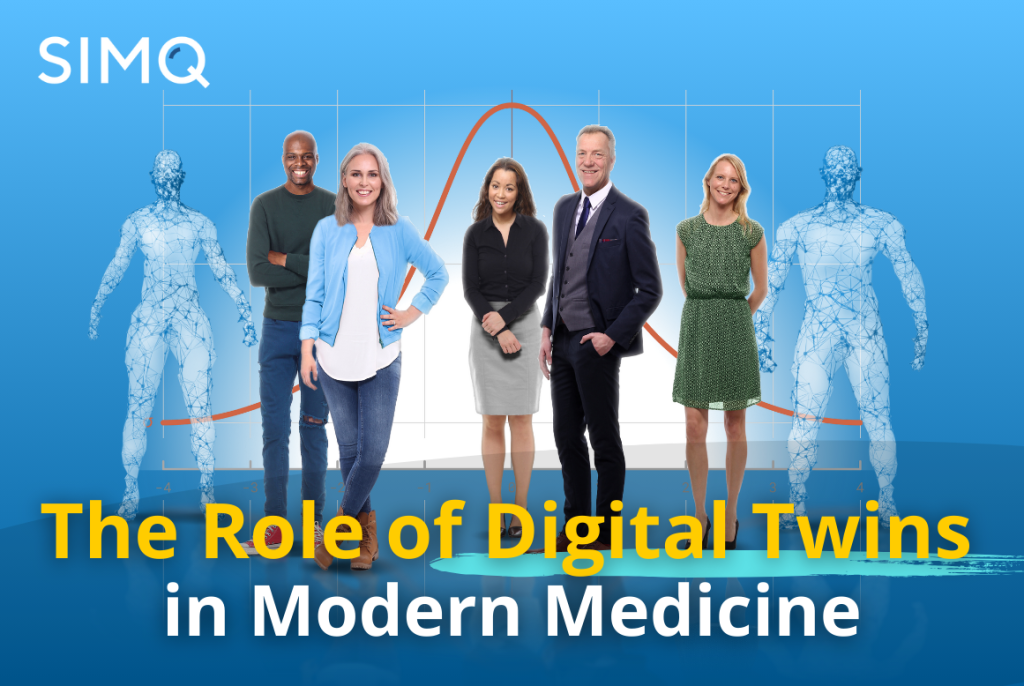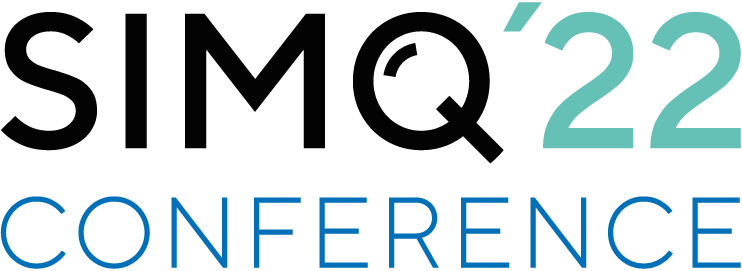
Digital twins rapidly transform healthcare by providing sophisticated virtual replicas of physical entities. These models go beyond simple representations, offering dynamic, interactive simulations that mirror the behavior and characteristics of machines or in medicine: organs, systems, and even entire bodies. By simulating real-time behaviors and interactions within the human body, this technology enables healthcare professionals to improve diagnosis, treatment planning, and personalized care, transforming medical decisions and patient outcomes.
For an in-depth exploration, watch our Director of Consulting & Seminars, Sven Herrmann, as he shares his expert insights on digital twins in medicine: Simq Podcast – Digital Twins In Medicine
What Are Digital Twins in Healthcare?
At its core, a digital twin is a virtual mirror of a physical entity, but it’s more than just a 3D model. It’s an interactive, dynamic simulation that shows what a body part looks like and how it behaves. This means that a digital twin can mimic how a heart beats, how electrical impulses move through nerves, or how bones respond to stress. It’s like taking an anatomical diagram to the next level, offering a fully interactive model that responds to data, providing us with insights we previously could not achieve.
This dynamic nature allows healthcare professionals to simulate different scenarios, predict outcomes, and personalize treatments based on the unique attributes of the patient’s digital twin. By integrating real-time data, these twins become powerful tools in medicine, enabling doctors to see what is and what could be—making them invaluable in diagnosis and treatment planning.
What Is the Role of Digital Twins in Healthcare?
Traditional medical approaches like in vivo (testing within a living organism) and in vitro (testing in a controlled lab environment) have long been the cornerstone of medical research and treatment development. However, these methods face significant limitations, mainly when predicting outcomes for individual patients. In vivo studies, while valuable, often involve broad assumptions that may not account for the unique characteristics of each patient. Similarly, in vitro tests are conducted in artificial settings that may not fully replicate the complexities of a living body, leading to results that may not always translate accurately to real-world scenarios.
The challenge with these traditional approaches is their one-size-fits-all nature. They often fail to capture the nuances of individual patient variability—such as differences in genetics, lifestyle, and environmental factors—which can significantly impact the effectiveness of a treatment. This limitation makes it difficult to predict how a treatment will work for a specific patient, potentially leading to less effective care.
Digital twins overcome this by allowing for extensive, individualized simulations—referred to as in silico simulations, which are computer-based models used to replicate biological processes. This approach allows every possible scenario to be tested virtually before making a medical decision, significantly reducing the need for time-consuming and costly clinical trials. These simulations are increasingly being recognized for their ability to replicate real-world conditions more effectively.
Simulation of custom-made medical devices under physiological conditions in individual patients.
Furthermore, adopting digital twins can significantly shorten the development cycle for medical devices. Traditionally, bringing a device to market can take up to seven years, with clinical trials consuming much of this time. Digital twins can reduce this by enabling virtual testing and validation, accelerating the overall process.
More on in vivo, in vitro, and in silico in our glossary In Silico | Meaning & Use
How Can Doctors Use Digital Twins?
Doctors can simulate procedures on these digital models to predict outcomes, which means they can tailor treatments more precisely to the patient’s needs. Take cardiology as an example: a digital twin of a patient’s heart can simulate electrical impulses to predict arrhythmias—irregular heartbeats caused by faulty electrical signals. This helps guide effective treatment strategies, such as catheter ablation, where a thin tube is inserted into the heart to destroy the small areas of tissue causing the irregular rhythm, thereby restoring normal heart function.
What is Verification and Validation in Medical Simulations?
The validation of a digital twin involves a two-step process: verification, which ensures the model’s algorithms are correct, and validation, which confirms the model accurately represents the physical phenomena it simulates. This process includes comparing simulation results with real-world data and adjusting the model as necessary. For example, in orthopedic applications, a digital twin of a bone might be validated by comparing its predicted responses to stress with those observed in actual bone samples. The credibility of a digital twin depends on this validation, making it a cornerstone of in silico medicine.
1: JACC 2016: Drugs, Devices, and the FDA: Part 2: An Overview of Approval Processes: FDA Approval of Medical Devices
2: Revital Hirsch: The Medical Device Milestone Map
3: University of Minnesota: Medical Device Innovation Handbook
How Do Consulting and Solutions Differ in Medical Simulation?
At Simq, the approach to simulation in healthcare can be divided into consulting and solutions. Consulting is highly personalized and designed to meet specific client needs, such as optimizing a medical device or conducting a detailed simulation study. This approach is ideal for companies requiring tailored expertise and guidance.
On the other hand, Simq’s solutions are more standardized tools, like the Virtual Implant Testing (VIT) app. These tools empower clinicians and researchers to independently run simulations, making the process more efficient and scalable. The choice between consulting and solutions depends on whether a client needs custom support or prefers ready-made tools that streamline their workflow.
What’s Next for Digital Twins in Medicine?
With advancements in AI and machine learning, digital twins will become even more sophisticated, potentially replacing some clinical trials, and making the whole process faster and more precise. Digital twins of the human brain are expected to achieve exceptional complexity, leading to significant breakthroughs in understanding and treating neurological disorders. These advancements will make digital twins an essential tool for healthcare professionals, enhancing their ability to diagnose and manage conditions.
For more on digital twins, read our glossary What is a Digital Twin?
Whether you need customized consulting or streamlined simulation tools, we’re here to help!





